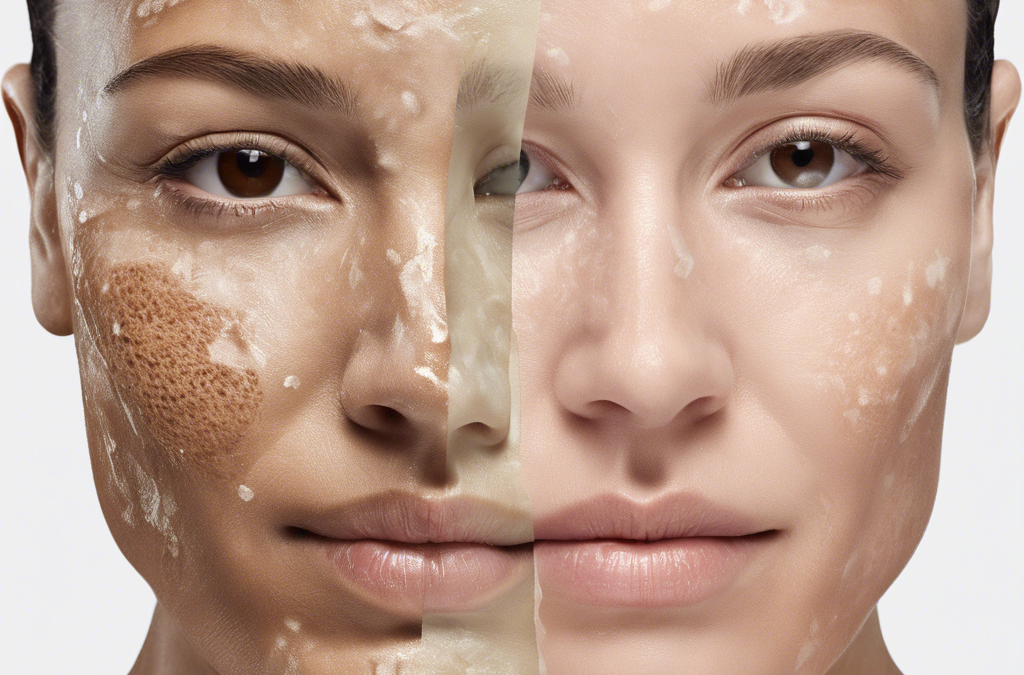Melasma is a common skin disorder characterized by irregular patches of shades of brown or gray that develop on the skin’s surface. It predominantly affects women aged 20 to 40, particularly those with Fitzpatrick skin types IV to VI, such as Hispanics, African Americans, Africans, and Asians. Often referred to as the “mask of pregnancy,” melasma affects 15 to 50% of pregnant women. While it may not be a rare condition, it poses significant challenges to treatment, especially in individuals with darker skin tones. Fortunately, various chemical peel solutions are available to help address this condition effectively.
Understanding Melasma
Melasma is an acquired disorder of hyperpigmentation that affects the skin’s quality of life and is challenging to treat. It is described as a notorious dermatosis, often resistant to treatment. Melasma is a skin condition triggered by an over-activation of melanocytes, the cells responsible for producing melanin in the skin.
Melasma and Skin Pigmentation
Melanin is a naturally occurring chemical responsible for pigmentation in the body. The amount of melanin produced by melanocytes determines the color of your skin. Melasma occurs when melanocytes in the epidermis are triggered to create more melanin. This overproduction of melanin leads to patches of excessive pigmentation or discoloration on the skin’s surface.
The Causes of Melasma
The exact cause and etiology of Melasma are yet to be fully understood. However, the most commonly identifiable risk factors include ultraviolet radiation, genetic predisposition, pregnancy, oral contraceptives, thyroid disease, and certain drugs like antiepileptics. Excessive pigmentation has been attributed to melanocytosis (increased number of melanocytes) and melanogenesis (excess melanin production).
Treating Melasma: The Role of Chemical Peels
Chemical peeling is a well-known treatment modality for melasma. It has shown promising results in many clinical trials. However, in darker races, the choice of the peeling agent becomes relatively limited. This is due to the increased risk of post-inflammatory hyperpigmentation (PIH). The treatment ranges from easily applied topical therapies to more extensive ones like lasers and chemical peels.
Understanding Chemical Peels
Chemical peels are skin resurfacing treatments that remove the epidermis, the outermost layer of skin, through controlled destruction. This process regenerates new epidermal and dermal tissues. Chemical peels come in many different forms, typically varying in strength and application according to the patient’s skin type.
How Do Chemical Peels Work?
Chemical peels work by causing controlled epidermal dyscohesion and subsequent regeneration. The peeling agent causes superficial effects, enabling the removal of epidermal melanin and melanin from the keratinocytes, halting melanosome transfer to keratinocytes. This makes it an indispensable modality in treating melasma.
Types of Chemical Peels for Melasma
There are a variety of chemical peels that can be used to treat melasma. These include Alpha Hydroxy Acid peels (such as Glycolic acid and Mandelic acid), Beta Hydroxy acids peels (such as Salicylic acid), and combination peels like Jessner’s solution and Tretinoin peels.
Alpha Hydroxy Acid Peels
Alpha Hydroxy Acid (AHA) peels, such as Glycolic acid (GA) and Lactic acid (LA), are the most commonly used peels for melasma. GA peels are usually used in a concentration of 30%–70%. Weekly sessions are conducted for a series of 4–6 sessions, two to three weeks apart.
Beta Hydroxy Acid Peels
Beta-hydroxy acid (BHA) peels, such as Salicylic Acid (SA) peels, help eliminate epidermal pigment in well-primed patients with melasma. Their lipid solubility improves their keratolytic action and smoother post-peel texture.
Combination Peels
Like Jessner’s solution, combination peels can cause controlled epidermal dyscohesion and subsequent regeneration. The peeling agent causes superficial effects, enabling the removal of epidermal melanin and melanin from the keratinocytes.
The Process of Getting a Chemical Peel
The chemical peel procedure is simple. The skin is cleansed beforehand, removing excess oil and dead skin cells. The agent responsible for the peel is then applied, and it will remain there for several minutes, depending on which medication comprises the peel. After several minutes have elapsed, the chemical is neutralized.
The Efficacy of Chemical Peels for Melasma
Chemical peels for melasma have been shown to be highly effective. They not only lessen the appearance of hyperpigmentation but also prevent melanosome transfer to keratinocytes, making them an indispensable modality in treating melasma.
The Role of Priming Agents
Priming or preparing the skin prior to the peel is a useful adjunctive measure that enhances the effect of the peeling agent and decreases the PIH. It involves applying a topical depigmenting agent like hydroquinone, tretinoin, or GA two weeks before the planned day of the peel.
Choosing the Right Chemical Peel for Melasma
When choosing the right chemical peel for melasma, it is essential to consult with a board-certified dermatologist. This is particularly important if you have a darker skin tone, as many skin-lightening products can harm dark-skinned patients.
Conclusion
Chemical peels can effectively treat melasma, primarily when performed by an experienced professional. They not only help reduce melasma’s appearance but also provide a rejuvenated and healthier skin appearance. If you have been struggling with melasma, a chemical peel may be the perfect solution for you. Contact Las Vegas Skin Pros Med Spa today to see if a chemical peel is ideal for treating melasma!
